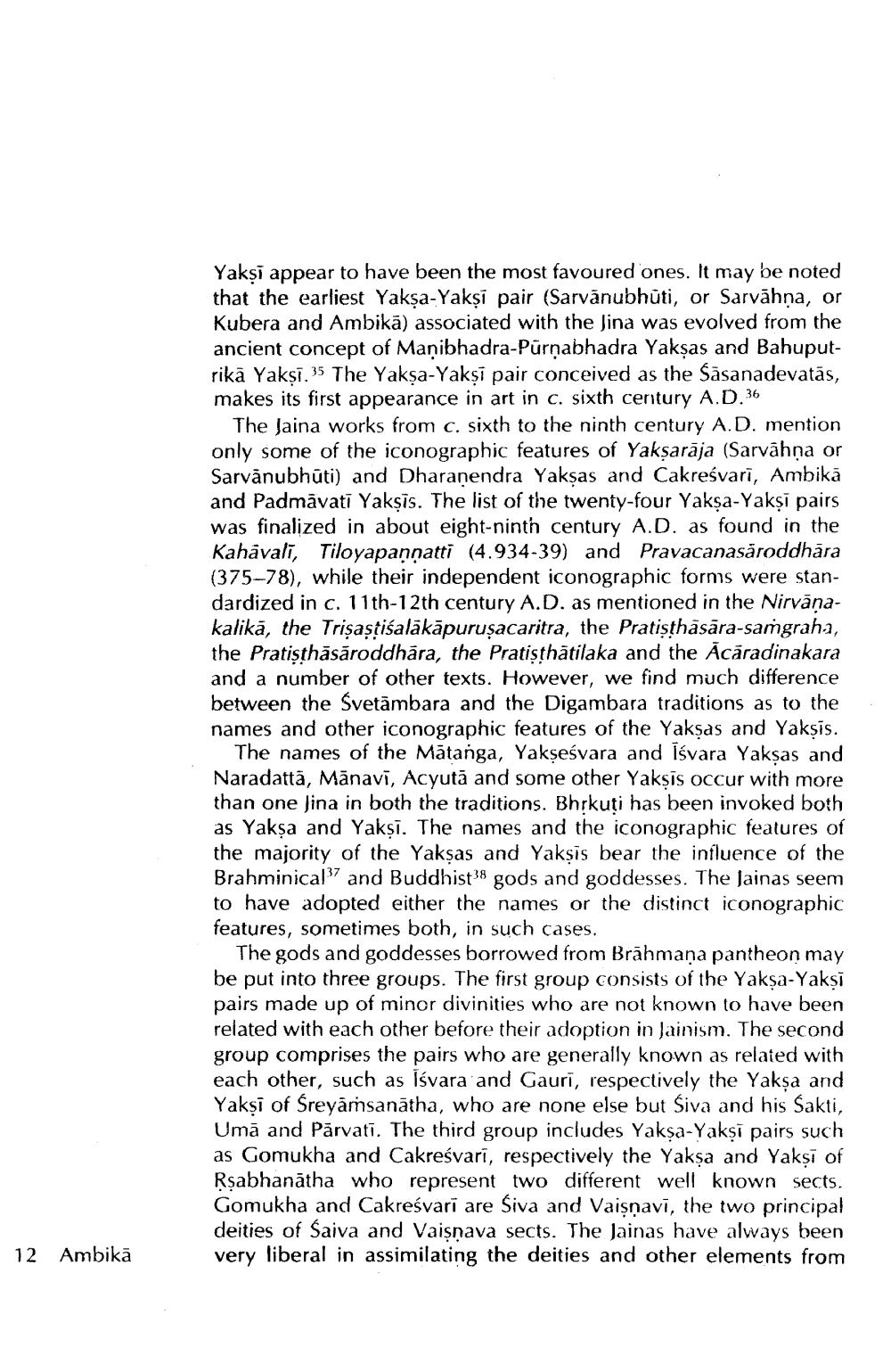________________
Yakşi appear to have been the most favoured ones. It may be noted that the earliest Yakşa-Yaksi pair (Sarvānubhūti, or Sarvāhna, or Kubera and Ambikā) associated with the Jina was evolved from the ancient concept of Manibhadra-Pūrnabhadra Yaksas and Bahuputrikā Yaksi. 35 The Yaksa-Yaksi pair conceived as the Sasanadevatās, makes its first appearance in art in c. sixth century A.D.36
The Jaina works from c. sixth to the ninth century A.D. mention only some of the iconographic features of Yaksarāja (Sarvahna or Sarvānubhūti) and Dharanendra Yakşas and Cakreśvari, Ambikā and Padmāvati Yaksis. The list of the twenty-four Yakşa-Yaksi pairs was finalized in about eight-ninth century A.D. as found in the Kahāvali, Tiloyapannatti (4.934-39) and Pravacanasäroddhāra (375-78), while their independent iconographic forms were standardized in c. 11th-12th century A.D. as mentioned in the Nirvanakalikā, the Trişaştiśalākāpuruşacaritra, the Pratisthāsāra-samgraha, the Pratisthāsāroddhāra, the Pratisthātilaka and the Acáradinakara and a number of other texts. However, we find much difference between the Svetāmbara and the Digambara traditions as to the names and other iconographic features of the Yakşas and Yaksis.
The names of the Mātanga, Yakseśvara and Isvara Yaksas and Naradattā, Mānavi, Acyutā and some other Yaksis occur with more than one Jina in both the traditions. Bhrkuti has been invoked both as Yaksa and Yaksi. The names and the iconographic features of the majority of the Yaksas and Yaksis bear the influence of the Brahminical and Buddhist38 gods and goddesses. The Jainas seem to have adopted either the names or the distinct iconographic features, sometimes both, in such cases.
The gods and goddesses borrowed from Brāhmana pantheon may be put into three groups. The first group consists of the YakşaYaksi pairs made up of minor divinities who are not known to have been related with each other before their adoption in Jainism. The second group comprises the pairs who are generally known as related with each other, such as isvara and Gauri, respectively the Yakşa and Yakşi of Sreyamsanatha, who are none else but Siva and his Sakti Umā and Pārvati. The third group includes Yaksa-Yaksi pairs such as Gomukha and Cakreśvari, respectively the Yaksa and Yaksi of Rşabhanātha who represent two different well known sects. Gomukha and Cakreśvari are Siva and Vaisnavi, the two principal deities of Saiva and Vaisnava sects. The Jainas have always been very liberal in assimilating the deities and other elements from
12 Ambikā




